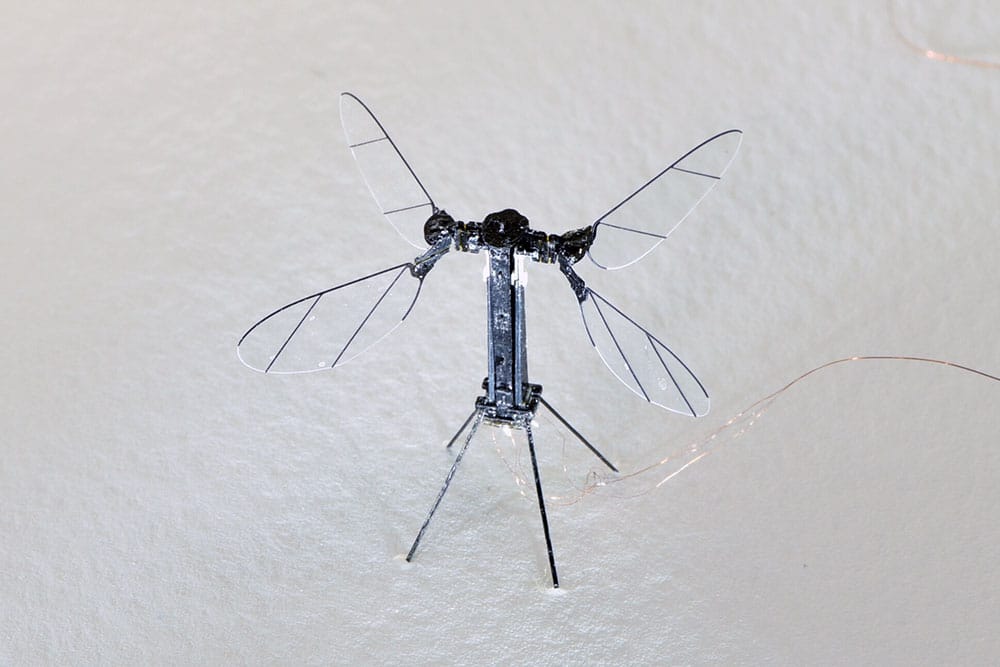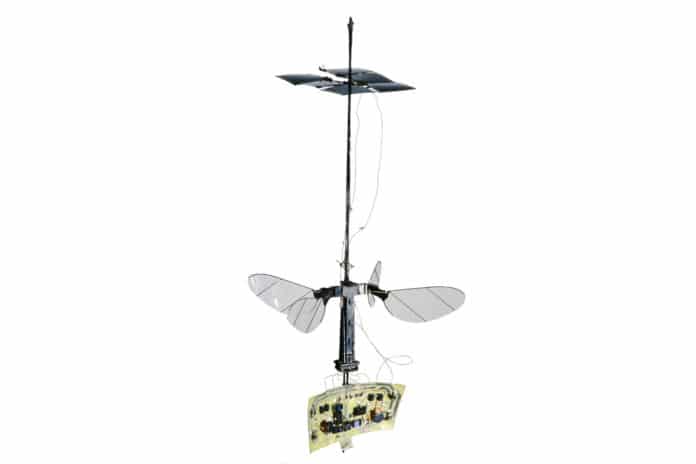Researchers at the Harvard Microrobotics Lab have developed the insect-inspired microrobot called the RoboBee X-Wing – the latest version of their astonishing RoboBee. The robot has become the lightest vehicle ever to achieve sustained flight without the assistance of a power cord, according to the researchers.
The Harvard researchers achieved untethered flight after decades of work. They made several changes to the RoboBee, including the addition of a second pair of wings.
The old version of RoboBee is a tiny robotic bee that contains two wings and has to rely on power in order to make it fly. However, the newer RoboBee X-Wing features solar cells and an electronics panel to power, while the extra pair of wings is given there for more stable and mostly autonomous flight.

The solar-powered RoboBee is 5 centimeters long and weighs only 259 milligrams. Solar cells are equipped at its top, and at the bottom are all of the drive electronics you need to boost the trickle of voltage coming out of the solar panels up to the 200 volts. This voltage is required to drive the actuators that cause the wings to flap at 200 Hz.
The robots’ bits and pieces are designed in such a way to keep the solar panels out of the airflow of the wings, while simultaneously keeping the overall center of mass of the robot where the wings are. Researchers equipped the robot with solar cells in order to reduce the extra weight of the batteries that it would need to power its wings.
Most tiny drones require a tether connected to an external power source in order to fly. Instead, the RoboBee collects its power from several small solar panels perched above its wings.
RoboBee X-Wing comes with some limitations also. It can only uphold its flight for hardly half a second and only indoors and is also too weak to carry a battery. It requires an intense light source – three times the strength of regular sunlight, researcher team says. You can watch a video of it in action given below.
Right now, the RoboBee looks a bit awkward, and it certainly isn’t ready to be commercialized. It will take some design optimization and additional integration work before RoboBee X-Wing gets to the point where it’s flying truly autonomously.
However, it points to a future when winged drones might weave through buildings and busy urban areas with unnerving ease.
The study is described in Nature.
